Posts filed under 'Off Topic'
Even if you’re just meeting the girls for a quick latté at the corner coffee shop, you’re going to want to look great. Maybe not Dressed Up chic, but definitely casually gorgeous.
After all, you never know who else you might see there.
Fashion Formula = Peacoat + Cute Casual Top + Cropped Pants + Carry-Everything Bag + Casual Flats.
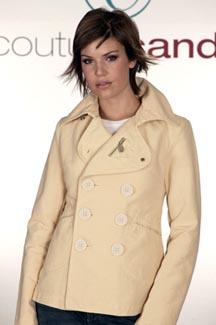
Diesel Estichyn Jacket | $290 at CoutureCandy
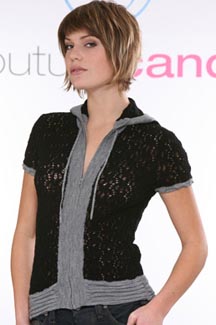
Iisli Lace Hoodie in Black | $228 at CoutureCandy

BCBG Drew Relaxed Linen Pant | $126 at CoutureCandy
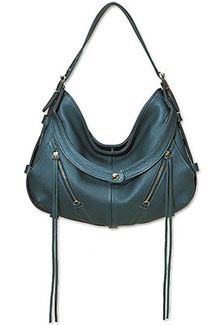
Botkier Stirrup Handbag in Twilight | $615 at CoutureCandy
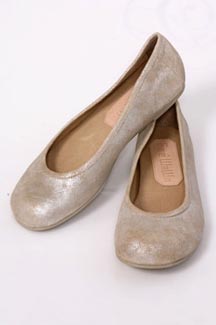
Gee WaWa Solid Weave Flat | $90 at CoutureCandy
At CoutureCandy, you can shop all the hottest designers in one place. You can read the latest industry news, get the inside scoop on the designers, and even keep up on (and purchase) what celebrities are wearing. You can share ideas and connect with other members of the CoutureCandy Community via the exclusive "Couture Talk" Forum or get inspiring wardrobe advice from their "Personal Stylists".
Editor’s Note: Yup, that’s right…this is Omiru’s First Ever advertisement. To mark this occasion, we wanted to let you into our conversation about how we think about advertising.
We strongly believe that advertising can be helpful. We know people who buy the Sunday newspaper just for the ads! And don’t tell us that you’ve never clicked on a Yahoo or Google text ad because it seemed like the best answer to your search! With that belief in mind, our goal is to make our ads as useful as possible. Hence the design of this post like a "Ready Made Outfit."
That said, we want to make the distinction between editorial and advertising plainly obvious. In case it wasn’t already clear, this post is sponsored by our friends over at CoutureCandy.com. In this case, and in all advertising going forward, we’ll note these special posts with a "Spotlight" tag in the headline.
February 8th, 2006
In our mix + match fashion culture, what is the role of a fashion lifestyle brand?
Lifestyle brands envelop the consumer in a fantasy world, a world that reinforces the brand not only though the models’ wearing of that label head to toe, but also, as the name suggests, though the lifestyle the company espouses. Ralph Lauren is the epitome of the fashion lifestyle brand. He created the "World of Ralph Lauren," a fantastically fictional WASPy world of Hamptons mansions, yachts, and upper crust American leisure. And while Ralph Lauren was building his empire, this lifestyle branding made a lot of sense. It not only allowed him to diversify into a wide variety of product lines, but it also reinforced the "one outfit, one designer" aesthetic of the day.
It’s quite an understatement to say that the world has since changed. Dressing head to toe in one designer gave way to the pluralism seen in today’s outfit choices. Nowadays, mixing and matching garments between different designers is a given—and it is more stylish than personifying a single designer’s vision.
In this atmosphere of fashion pluralism, the role of a lifestyle brand has also shifted. As direct translations of a designer’s vision, these lifestyle brands are no longer to be taken literally—instead, they exist to inspire us, to give us something to aspire to, to give us a taste of another life. Here, one can draw a parallel, comparing meticulously fictionalized lifestyle brands to elaborately staged runway shows. Much is being said about how runway shows are growing more irrelevant over time. Some deride them as money losing propositions staged for ephemeral brand value. Others question the wearability of the outfits that are presented.
But while these factors do alter the role of the runway show, they do not necessarily make that role immaterial. We would argue against runway’s irrelevance–and that of lifestyle brands. For as long as they continue to inspire, to encourage innovation in design, to wake the creative spirits in the consumer public, they will hold value—measurable or not.
February 3rd, 2006
Julie of Almost Girl asks, "What will fashion advertising look like and where will it come from?" While the future is hazy (at best) to us as well, we’ll offer up our two cents.
Question 1: What will fashion advertising look like?
Fashion advertising, as discussed in Part One of this post, will likely be a combination of branding and direct response advertising—and more heavily weighted toward direct response than it is now. As for what it’s going to look like, we’ll throw our hat in the ring and offer up a few ideas:
Branding isn’t going to go away. The “slick expensive ad campaigns shot by expensive photographers with exotic models†described by Julie aren’t going to end. However, the measurability of direct response is likely going to affect the way branding campaigns are run.
We predict that these branding campaigns (the ones with the beautifully blasé looking models) will be held to a higher standard, one that involves metrics in some shape or form. The fashion industry is waking up to the potential of the Internet, and though the industry will inevitably face a rocky road on its quest to embrace these online opportunities, they’ll get there.
Direct response fashion advertisements aren’t going to look like your standard Google text ad. For one, they’ll have to include images—even a lengthy description of that perfect oversized teal sweater is far less compelling than a thumbnail image of the garment.
Question 2: Where will fashion advertising come from?
Right now, fashion advertising is dominated by Big Companies with Deep Pockets. Completely natural, given that they’re the ones that have the dollars to shell out on these expensive branding campaigns. Take a look at the latest Vogue (or other fashion magazine of your choice). Who do you see advertising? Luxury brands, big name designers—most, if not all, with financial backing. After all, that Versace ad with Halle Berry can’t have been cheap to produce.
Fashion, however, is becoming more democratic (in part, thanks to the scores of up and coming designers looking to make their mark, and as The Fashionable Kiffen notes, thanks to fashion bloggers). Advertising in the future, especially as the industry shifts towards the scalable, affordable direct response ads, will include more of these voices. While the majority of fashion ads might still be from the Louis Vuittons, the Versaces, and the Calvin Kleins of the world, smaller designers will be able to speak as well.
February 1st, 2006
Danielle over at Final Fashion wrote an interesting post about how runway shows are a money-losing proposition and only really appropriate for Big Name designers. Fashion Merchandising 101 told me that runway shows, while Glamorous, are staged more for branding purposes than for actually directly generating sales. I’m generalizing here, but runway shows are staged for the press (so they’ll write about you and promote you to Jane Q. Public) and for your top clients (so they’ll feel special and buy more of your clothes!).
As Bob McCarthy pointed out in his blog, The Direct Response Coach, the advertising world is made up of two groups with very different philosophies: branding and direct response. The fashion world, for better or for worse, is heavily weighted towards the branding camp. Why? Well, fashion depends heavily on perception, and having a strong brand gives a product a leg up in the marketplace. And what makes branding so enticing to fashion companies is that building a strong brand allows them to elevate consumers’ perception of their entire product portfolio—all in one fell swoop. When you consider the number of products that are in a typical fashion line (from dozens to hundreds), branding as an advertising philosophy makes a whole lot of sense.
Direct response, however, is the reigning queen of the online advertising space. What’s so interesting about Internet advertising (as compared to offline advertising) is its inherent measurability. If you run an ad through Google AdWords or through Yahoo! Search Marketing, for example, it’s possible to see how many people saw that ad, how many people clicked on your ad, and how many people bought something/registered for something/etc on your site. You can calculate your return on investment (or ROI) for your advertising dollars. You can quantify how effective your advertisements are and make adjustments as needed.
Branding vs. Direct Response. In the fashion world, branding (at least offline) is the clear winner as I write this in January 2006. But what about the future? Will branding continue its reign? Or will direct response win out in the end?
I don’t pretend to know the answer to this question, but I’ll share with you my humble prediction. The forces that make branding so enticing today will continue to exert influence in the years to come. But the allure of direct response’s measurability will also have an impact on how fashion advertising budgets are spent. There’s something to be said for a quantifiable ROI. Already, some fashion companies are listing their products on direct response-type sites like Shopping.com and Shopzilla.com. A quick glance at women’s apparel on Shopping.com showed items from Bergdorf Goodman, Bloomingdales, J. Crew, and Kenneth Cole. I predict that we’ll see a significant increase in this direct response advertising, but we won’t see that jump until we see more specialized fashion shopping search sites. That is, it’s not going to be a Shopping.com or a Shopzilla.com that’s going to see this gain (unless they radically improve the way their sites work for the apparel category). Instead, I think it’s going to be a specialized fashion search vertical.
What do you think about the future of fashion advertising? Branding? Direct response? Or both?
January 31st, 2006
This week, Omiru is proud to participate in "The State of the Fashion Union," a blogging carnival hosted by Julie of Almost Girl.
We’ll continue to post the product-focused fashion guides that you’ve
(hopefully) come to love, but we’ll intersperse them with posts about
more philosophical issues in the fashion world. We encourage you, as
always, to tell us what you think about these issues. Our opinions are
just that—our
opinions. If you have another way of looking at the issue, or anything
else to add, we wholeheartedly welcome your comments. And with
that…let’s begin!
Back in December, Cathy Horyn wrote an article in the New York Times about how fashion is Two Clicks Behind. That is, the processes of the fashion industry (and particularly the mainstream fashion media) hasn’t caught up to the speed of the Internet. Julie of Almost Girl, however, believes that, thanks to fashion bloggers, the fashion media isn’t all Two Clicks Behind anymore—in fact, some of us are Two Clicks Ahead.
My question is: What happens when the fashion media is Two Clicks Ahead? What does this mean for the fashion ecosystem?
As it stands, the fashion ecosystem, like those found in nature, is the result of a careful balance of forces. Designers staging runway shows wield great influence. These designers influence the buyers that stock store shelves, the designers at mass market fashion brands lower down the food chain, as well as the consumers who ultimately buy the clothes. Some consumers go straight to the source and buy clothes from the designer. But those of us who don’t have money to burn need not worry. The trends these designers espouse find themselves interpreted by mass market fashion brands, repackaged and resold at more affordable price points. But these designers don’t design in a vacuum. They, in turn, are influenced by anything and everything—street style, art, music, movies, and the work of other designers.
Back in fashion school, I was taught about the Fashion Trend Life Cycle. It was a very nice, simple diagram. You first have your fashion innovators creating the trends. Next up are the early adopters who popularize the trends. After the early adopters comes the mass market, after which are the late adopters…and then the trend is over. This is the way fashion has always been. Each trend starts somewhere, it gains popularity, it goes mass market, it starts to go Out of style, and then it’s gone.
But back to the question—what happens when the fashion media is Two Clicks Ahead? To answer this question, one first should look at the time it takes to go through one cycle. Back in the Olden Days, it used to take several years for a style to come in and go out of fashion. Then it took one or two years. Now, it can be a matter of months. As the fashion media moves towards being Two Clicks Ahead, the time it will take for a style to rise to prominence will become shorter and shorter.
I wonder, how far can we take this accelerated fashion trendmill? What happens when it’s a matter of weeks to popularize a style from obscurity? Or, even scarier, a matter of days? What will fashionistas do?
I don’t know the answer to these questions, but here are my predictions:
Fragmentation: As the fashion trendmill accelerates, I think the
fashion market will fragment more and more. It’s going to be harder
for big companies to sell tons of the same style. Companies that are
going to benefit from this sea change in the industry are going to be
those that produce clothes in small batches as close to market as
possible. Small batches because of this increased fragmentation, and
as close to market as possible to more accurately predict demand for
each trend.
Confusion: As fast as fashion moves now, it’s hard enough to choose what’s right for you. It’s going to become more and more important to choose your trends wisely, based on your personal style, body type, etc. My sad prediction is that we’re going to see a lot more fashion victims who choose their trends willy nilly.
Backlash: As trends come and go in what seems like the blink of an eye, smart fashionistas are going to rely more on their own concept of personal style in order to dress stylishly without having to run to the mall every couple of days. We’re going to see a lot of interesting fashion bubbling up from the streets, and it’s not going to be all about what you’re wearing. It’s also going to be about how you wear it. Well, that’s my pie-in-the-sky hope, at least.
But my predictions aside, tell me, what do You think will happen to fashion when it’s Two Clicks Ahead?
January 29th, 2006
We’re pleased to announce that Omiru is welcoming two editorial interns to our team. Please give a warm welcome to Dino-Ray Ramos and Melody Nazarian!
In their own words…
Dino: I am a freelance, storytelling writer with a specialty in style and entertainment. As a pop culture junkie, I am always exploring fashion- what’s hot, what’s not and what should be banned from retail stores everywhere. From haute couture to ready-to-wear, I have this viewpoint of style that is slanted, yet professional. I am a family-taught amateur designer that is constantly curious with the industry. Whether or not I am the best amateur designer, I thoroughly enjoy writing about fashion - from the obscure to the big time; I aggressively explore everything to stay on top of the fashion game.
Melody: While most kids my age were watching Saturday morning cartoons in the third grade, I opted for Fashion File with Tim Blanks. Although I have no formal fashion education, I have a naturally keen eye for style and can spot fakers (translation: those who try to be trendy but either overdo it or don’t even get close) from miles away. When I wear funky outfits (which is more often than not), I’ve been told, “Only you would be able to pull that off.â€
January 23rd, 2006
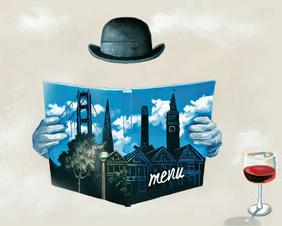 This month only, Bay Area foodies can dine in style at dozens of San Francisco hotspots for a portion of the usual price. At any participating restaurant, enjoy a
This month only, Bay Area foodies can dine in style at dozens of San Francisco hotspots for a portion of the usual price. At any participating restaurant, enjoy a
promotional three-course lunch for $21.95 and/or a three-course dinner
for $31.95 when you use your VISA card.
We’re already scheming about visiting the likes of A16, Ana Mandara, BIX and One Market.
To view a list of restaurants and sample lunch and dinner menus, click here.
Bon appetit!
January 15th, 2006
What do you like best about Omiru? What do you think we could do better?
Please take a few minutes to tell us! We’re running a short survey for the next week, and we’d Love to hear from you.
We want to know more about what you like, what you don’t, and what you’d like to see on Omiru.com. We’ll be using your responses to better serve your needs—by modifying existing features and adding new ones.
The information you provide in this survey will be kept completely private and anonymous. It will not be linked to your email address or any other form of personally identifiable information.
So tell us what you think! We’re listening…
Sincerely,
The Omiru Team
January 13th, 2006
This just in: Fiorucci, the beloved Italian house known for flashy t-shirts, rock-n-roll jeans and political fashion statements, has unveiled a special collection for Target.At $12.99 for one of Fiorucci’s iconic tees, we can afford to buy a few more for our girlfriends!
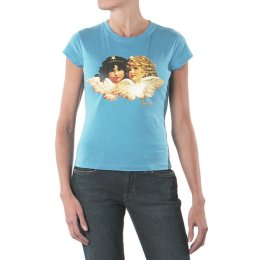
Fiorucci Cherubs Tee | $12.99 at Target
December 21st, 2005

We wanted to share with you a recent find of ours: Candy Covered Books, whose mission it is to help you find your next must-read book. Featuring book reviews of women’s fiction, Candy Covered Books combines reviews from professional and amateur sources to create a single rating.
Candy Covered Books started as a Book Club for Two, so to speak, as co-founders Rosa and Liza would recommend books to each other as students at UC Berkeley. After a couple really bad books, they decided that they needed a way to identify the Good books. Rosa industriously created a spreadsheet to add books and reviews and calculate a rating for each book. Rosa and Liza then started sharing the spreadsheet with friends, and it started to gain momentum. Pretty soon their friends and friends of their friends were asking the duo to email them updated versions and these friends started adding to it. Eventually, and at the urging of their husbands, Rosa and Liza set up a website and database to manage the book reviews, and Candy Covered Books was born.
Look for more cool stuff from Candy Covered Books in the future— Rosa and Liza are branching out from chick lit books to include cookbooks in the next couple months. And after that, they’re looking into adding beauty and fashion books. We can’t wait!
December 20th, 2005
Next Posts
Previous Posts





 This month only, Bay Area foodies can dine in style at dozens of San Francisco hotspots for a portion of the usual price. At any participating restaurant, enjoy a
This month only, Bay Area foodies can dine in style at dozens of San Francisco hotspots for a portion of the usual price. At any participating restaurant, enjoy a
